Cannondale have unveiled a radical redesign of the Synapse ‘comfort’ bike, which the US firm claim is “lighter, stiffer, stronger and smoother” than its predecessor.
The Synapse Hi-Mod is the latest addition to a fast-moving sector of ‘comfort’ or ‘endurance’ bikes, following in the footsteps of, among others, the Trek Domane in 2012 and, earlier this year, the launch of the Bianchi Infinito CV ahead of Paris-Roubaix.
It was at Paris-Roubaix that we first spotted the Cannondale Synapse Hi-Mod. The cobbled climbs and pavé sectors of the Classics are a natural testing ground and Cannondale Pro Cycling’s Slovak Sensation, Peter Sagan, rode the Synapse Hi-Mod to victory at Ghent-Wevelgem, before finishing second behind Fabian Cancellara at the Tour of Flanders (although the 23-year-old didn’t ride Paris-Roubaix).
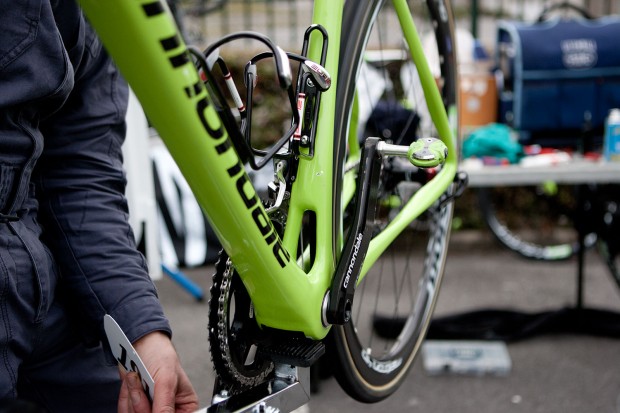
So it’s got race-winning pedigree. The Synapse Hi-Mod borrows features from both Cannondale’s flagship SuperSix Evo race machine and the existing Synapse, while three key technologies combine to create what Cannondale call “the perfect balance between raw power and fine-tuned flex”.
Most noticeable is the ‘Power Pyramid’ seattube cutout. The seattube essentially splits asymmetrically at its base to accommodate a new, wider (73mm-wide, to be precise) BB30A bottom bracket, which is said to improve stiffness without sacrificing weight.
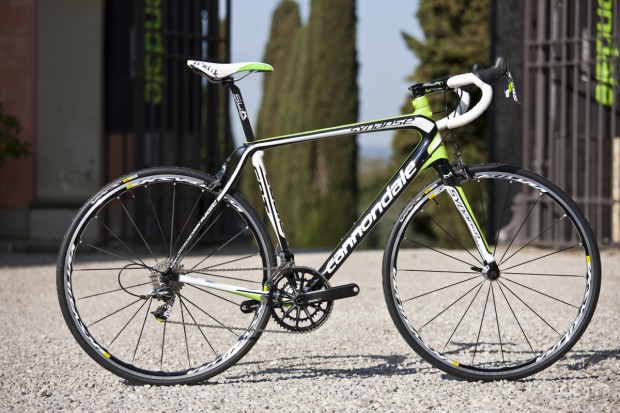
Frame weight is, by the way, a claimed 950g. That’s a shade under 300g heavier than Cannondale’s featherweight SuperSix Evo frame in its lightest Nano configuration but weight is rarely at the top of the design agenda when developing a ‘comfort’ bike and the Synapse still falls under the sub-kilo mark, making it among the lightest in its category. By way of comparison, that’s the same as the Bianchi Infinito CV and 100g less than the Trek Domane.
The Synapse Hi-Mod borrows the BallisTec carbon construction previously only used on the SuperSix Evo, unveiled in 2011. BallisTec employs high-strength, high-elongation carbon fibres to create a base structure which Cannondale say is strong, light and stiff. Cannondale are so confident about the strength of the frame that they’ve slapped a lifetime warranty on it.
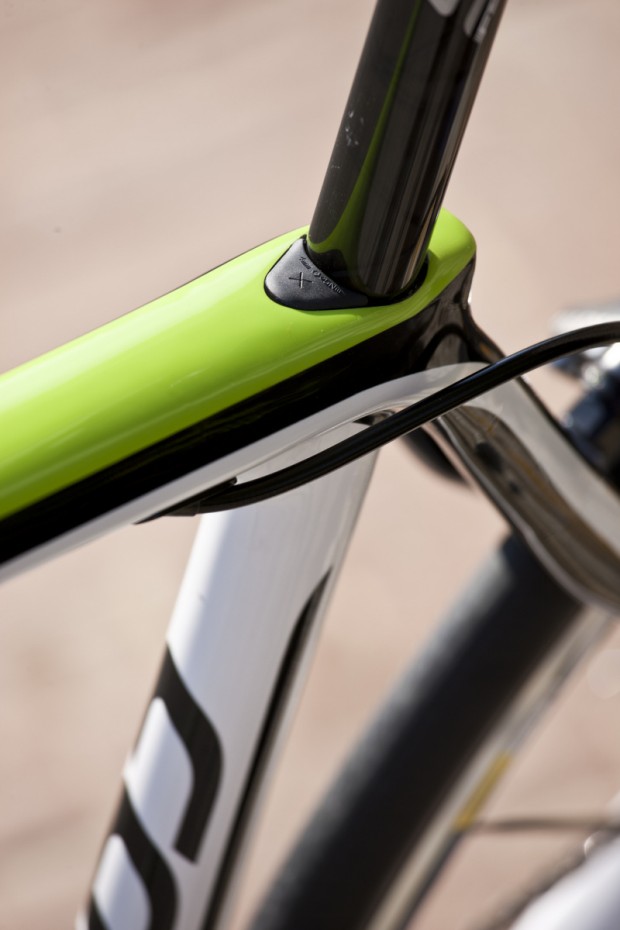
SAVE+, meanwhile, is the latest evolution of Cannondale’s micro-suspension technology. It’s been applied to the rear triangle and fork and uses a tweaked carbon fibre layup to dissipate road buzz, as well as shapely tube profiles to build more comfort into the ride.
The helixed seatstays twist to increase the length of the carbon fibres in relation to the stays themselves, which reportedly improves vertical compliance, while, up front, the fork also has a similarly shapely design and has offset dropouts, again to improve comfort, while it has also been designed to flex. Needless to say, the fork has a steerer which tapers from 1-1/4″ to 1-1/8″.
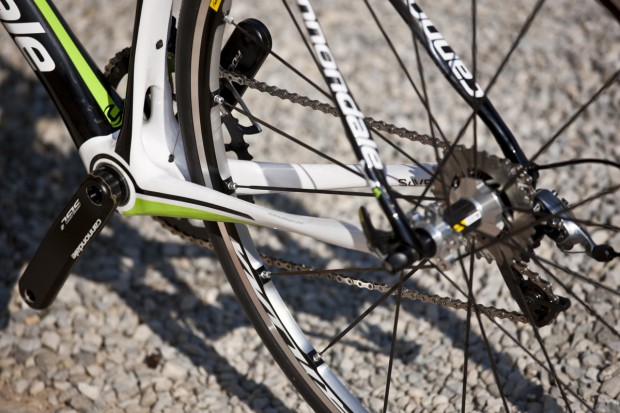
The standard diameter of a seatpost has fast become 27.2mm but Cannondale have gone skinnier still on the Synapse Hi-Mod, with the 25.4mm post designed to have a little more flex. Cannondale have also redesigned the seatpost clamp and, while it looks very similar to the aero design of the firm’s Slice RS time trial bike, it has been developed to allow more seatpost to extend above the toptube – again for added comfort.
Frame technology aside, the Synpase Hi-Mod uses Cannondale’s Synapse Endurance Race Geometry (S.E.R.G), which sits between the firm’s Elite Race Geometry (on which the SuperSix Evo is based) and the Comfort Road Geometry of the old Synapse. It means the Synapse Hi-Mod is a touch more aggressive compared to its predecessor, with a slightly longer toptube and shorter headtube, but not quite as racy as the SuperSix Evo.
It is, however, an additional indication that Cannondale have not design the Synapse Hi-Mod as a sit-up-and-beg sportive bike. Sagan’s results (which also include a second place finish at E3-Harelbeke) are testament to that and, while Cannondale produced a custom geometry for the 2012 Tour de France green jersey winner, the rest of the team rode stock frames.
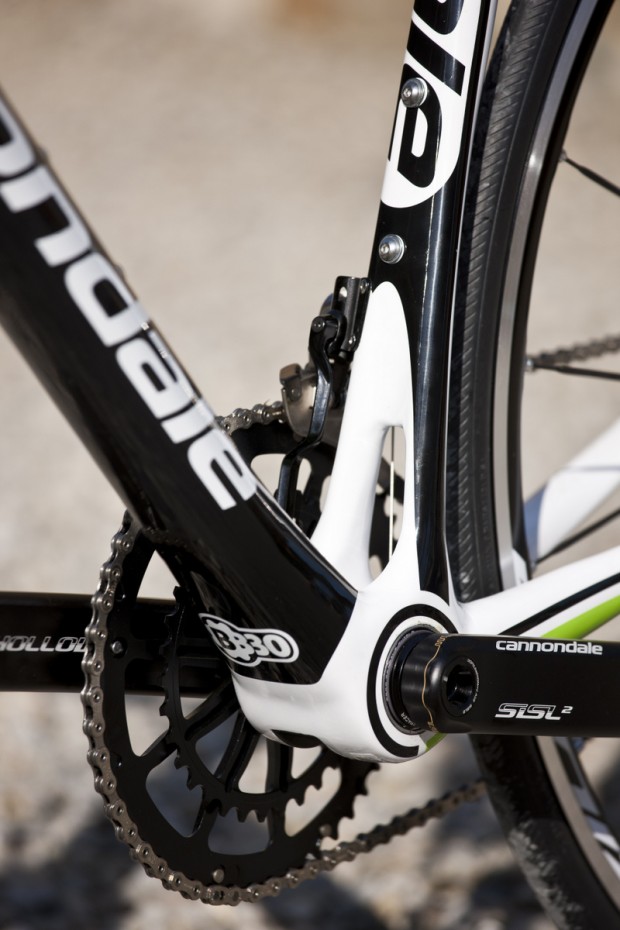
Speaking of which, the Cannondale Synapse Hi-Mod will be available in six models: three for men (in six frame sizes, from 48cm to 61cm) and three for women (in five frame sizes from 44cm to 56cm). Of the men’s models, the flagship Synapse Hi-Mod Black Inc is finished in matt black and is specced with mechanical Shimano Dura-Ace 11-speed and Vision Metro 40 carbon clinchers wrapped in 25mm Schwalbe Ultremo ZX tyres.
Meanwhile, the Synapse Hi-Mod 2 SRAM Red is dressed in SRAM’s recently-announced Red 22 groupset, albeit with traditional brake calipers and not the optional hydraulic rim/disc brakes. Interestingly, the Mavic Ksyrium Elite S WTS wheels are paired with 28mm Mavic Yksion tyres. Such wide tyres are rarely specced on an off-the-shelf machine but will almost certainly lead to a plusher ride.
Finally, the Synapse Hi-Mod 3 Ultegra also comes with 28mm Mavic Yksion tyres, this time with the French firm’s Ksyrium S hoops, while the frame is decked out in Shimano Ultegra. All three models come with FSA finishing kit and a Fizik Aliante saddle.
The Cannondale Synapse Hi-Mod will be available in the UK this summer. Prices are yet to be confirmed.






